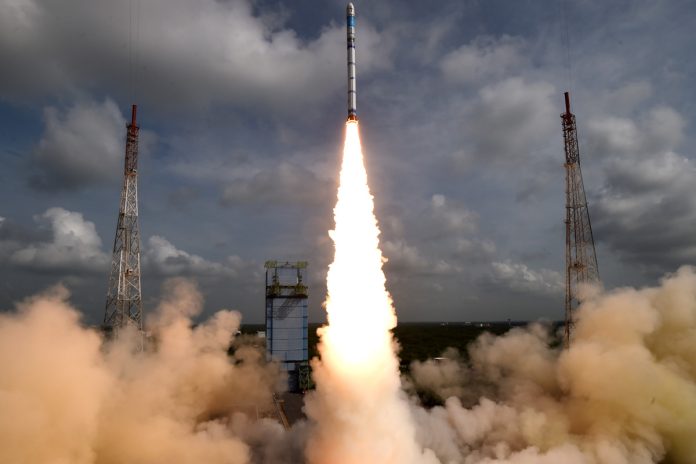ISRO: On August 16, the Indian Space Research Organisation (ISRO) successfully launched the EOS-08 Earth Observation Satellite aboard the Small Satellite Launch Vehicle (SSLV)-D3 from the Satish Dhawan Space Centre in Sriharikota. The SSLV-D3, in its third and final developmental flight, lifted off from the center’s first launch pad at 9:17 am.
Seventeen minutes post-launch, the EOS-08 satellite was precisely placed into a 475 km circular orbit, as planned. ISRO Chairman S. Somanath confirmed the mission’s success, noting that the rocket delivered the spacecraft into orbit without any deviations, indicating flawless performance.
With this success, ISRO has declared the development of SSLV complete. Mr. Somanath also mentioned that ISRO is in the process of transferring SSLV technology to the industry for serial production and future launches, marking a significant milestone.
SSLV-D3/EOS-08 Mission:
— ISRO (@isro) August 16, 2024
✅The third developmental flight of SSLV is successful. The SSLV-D3 🚀placed EOS-08 🛰️ precisely into the orbit.
🔹This marks the successful completion of ISRO/DOS's SSLV Development Project.
🔸 With technology transfer, the Indian industry and…
The EOS-08 mission, a pioneering endeavor built on ISRO’s Microsat/IMS-1 bus, features advanced payloads including an IR observation suite, a novel GNSS-R payload, and a SiC UV dosimeter. The satellite also incorporates cutting-edge technology in its mainframe systems, such as an Integrated Avionics system (CBSP Package), embedded structural panels, and a flexible solar panel, among others.
The satellite is equipped with three payloads: the Electro Optical Infrared Payload (EOIR) for imaging in the Mid-Wave and Long-Wave IR bands, the GNSS-R payload for remote sensing applications, and the SiC UV Dosimeter for monitoring UV radiation, particularly for the Gaganyaan Mission.
The mission is configured to operate in a 475 km Circular Low Earth Orbit (LEO) with a 37.4° inclination and has a mission life of one year. Additionally, the SR-0 DEMOSAT developed by Space Kidz India was also successfully deployed into the intended orbit.
The SSLV, designed to launch Mini, Micro, or Nano satellites (ranging from 10 to 500 kg) into a 500 km planar orbit, is a three-stage vehicle with all solid propulsion stages and a liquid propulsion-based Velocity Trimming Module (VTM) as the terminal stage. SSLV’s design focuses on cost-effectiveness, quick turnaround, flexibility in accommodating multiple satellites, and minimal launch infrastructure, providing a promising solution for on-demand satellite launches.

